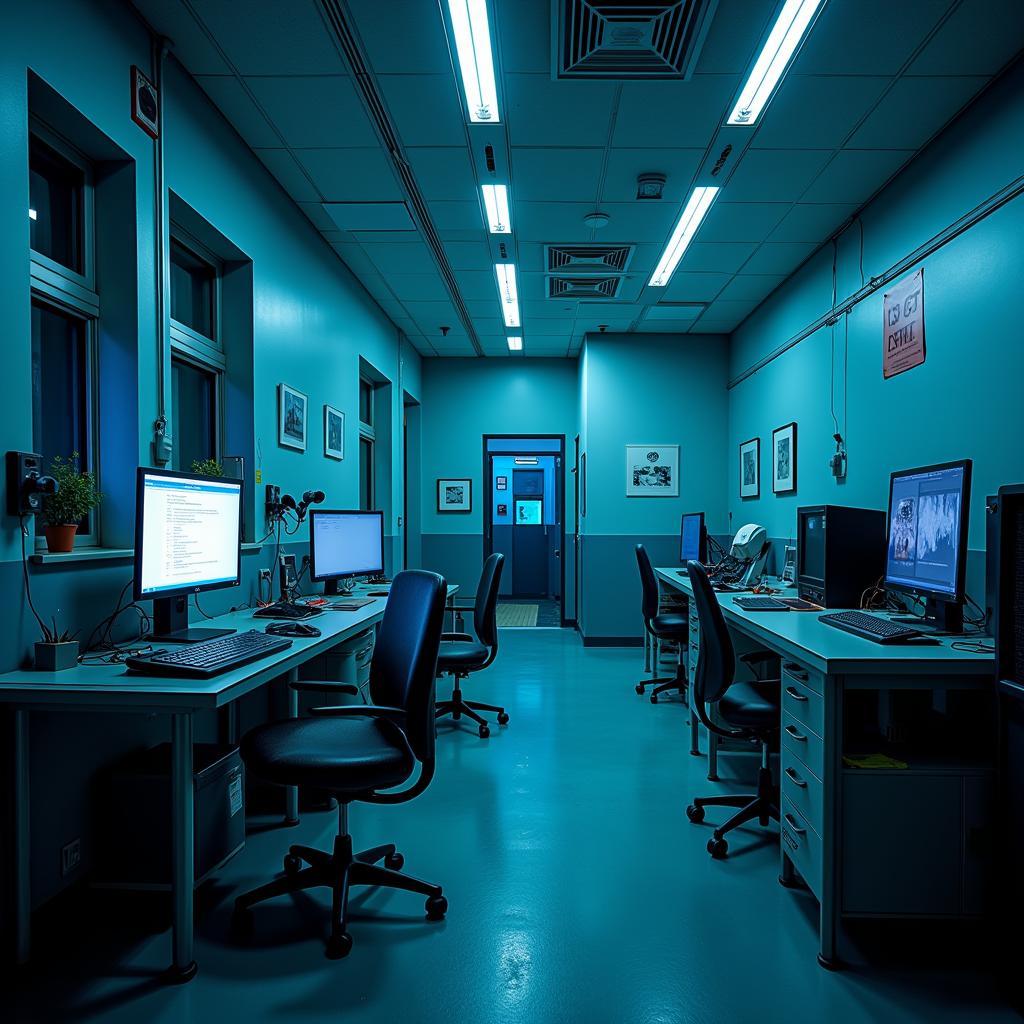In the ever-evolving landscape of scientific exploration, Emerging Research Institutions are pushing the boundaries of knowledge, venturing into the enigmatic realm of the paranormal. These institutions, driven by a spirit of curiosity and armed with cutting-edge technology, are challenging conventional wisdom and seeking answers to some of humanity’s most enduring mysteries.
What Defines an Emerging Research Institution?
Unlike established institutions with long histories and rigid research frameworks, emerging research institutions are characterized by their agility, adaptability, and willingness to embrace unorthodox approaches. They often operate independently of traditional funding sources, relying on private donations, grants, and the passion of their researchers.
These institutions are often founded by individuals with a deep fascination for the paranormal, ranging from seasoned scientists seeking answers beyond the conventional to dedicated enthusiasts with a desire to shed light on the unknown.
Key Areas of Focus in Paranormal Research
Emerging research institutions delve into a diverse range of paranormal phenomena, often focusing on areas that have long captivated human imagination but remain largely unexplained. Some of the key areas of exploration include:
- Extrasensory Perception (ESP): Investigating abilities like telepathy, clairvoyance, and precognition through rigorous experiments and data analysis.
- Psychokinesis: Studying the potential for the mind to influence matter directly, such as moving objects with thought alone.
- Haunted Locations: Employing a multidisciplinary approach, including historical research, environmental monitoring, and psychological analysis, to understand the nature of hauntings and alleged paranormal activity.
- Cryptozoology: Documenting and analyzing evidence of creatures whose existence is disputed or unverified by mainstream science, such as Bigfoot or the Loch Ness Monster.
- Ufology: Studying unidentified flying objects (UFOs) and the possibility of extraterrestrial visitation, often involving the analysis of witness testimony, radar data, and photographic evidence.
 Paranormal research lab equipment
Paranormal research lab equipment
The Role of Technology in Modern Paranormal Research
One of the defining characteristics of emerging research institutions is their embrace of cutting-edge technology to investigate paranormal phenomena. Advanced tools and techniques allow researchers to gather data with greater precision, analyze findings more effectively, and potentially uncover new insights that traditional methods might miss. Some of the technologies employed include:
- Electroencephalography (EEG): Measuring brainwave activity to detect any unusual patterns or anomalies during paranormal experiences.
- Electromagnetic Field (EMF) Detectors: Used to identify fluctuations in electromagnetic fields, which some believe might be associated with paranormal activity.
- Infrared Thermal Imaging: Detecting temperature variations that might indicate the presence of unseen entities or energy sources.
- Digital Audio Recording and Analysis: Capturing and analyzing sounds beyond the range of human hearing, searching for evidence of EVPs (Electronic Voice Phenomena).
- High-Speed Cameras: Recording events at extremely high frame rates to observe phenomena that occur too quickly for the naked eye to perceive.
Overcoming Challenges and Maintaining Scientific Rigor
Emerging research institutions face unique challenges, particularly in maintaining scientific rigor and gaining acceptance within the wider scientific community. Skepticism and criticism are common, and researchers must adhere to stringent protocols to ensure the validity and reliability of their findings. This includes:
- Developing Testable Hypotheses: Formulating clear and specific research questions that can be investigated through empirical observation and experimentation.
- Implementing Control Groups: Comparing experimental results to a baseline group that does not receive the treatment or intervention being studied.
- Employing Blind and Double-Blind Procedures: Minimizing bias by concealing the treatment conditions from participants and researchers whenever possible.
- Statistical Analysis: Applying rigorous statistical methods to analyze data and determine the significance of any observed effects.
- Peer Review: Submitting research findings to independent experts in the field for critical evaluation and feedback.
 Paranormal investigators analyzing data
Paranormal investigators analyzing data
The Future of Paranormal Research: Collaboration and Openness
The future of paranormal research likely lies in increased collaboration between emerging institutions and established scientific disciplines. By combining the innovative spirit of these new institutions with the expertise and resources of mainstream science, researchers can foster a more comprehensive understanding of the unexplained.
Furthermore, a commitment to transparency and open access to data will be crucial in building credibility and fostering trust within the scientific community and the public. By embracing a spirit of open inquiry and rigorous investigation, emerging research institutions have the potential to unlock profound insights into the nature of reality and the mysteries that lie beyond our current understanding.
Conclusion
Emerging research institutions are playing a vital role in pushing the boundaries of scientific exploration, venturing into uncharted territories to investigate the paranormal. While challenges and skepticism remain, their dedication to rigorous methodology, technological innovation, and open collaboration holds the promise of uncovering new truths and expanding our understanding of the universe we inhabit. If you’re interested in supporting these groundbreaking endeavors, consider contacting an emerging research institution near you or exploring the fascinating world of paranormal research through reputable online resources.
FAQs about Emerging Research Institutions
1. Are emerging research institutions legitimate scientific organizations?
While definitions of “legitimate” vary, many emerging research institutions are dedicated to applying scientific principles and methodologies to study paranormal phenomena. However, it’s essential to research each institution individually to assess their credibility and research practices.
2. What are some of the challenges faced by emerging research institutions?
Common challenges include securing funding, attracting qualified researchers, overcoming skepticism within the scientific community, and ensuring the replicability of findings.
3. How can I get involved in paranormal research?
Consider volunteering or interning at an emerging research institution, joining a local paranormal investigation group, or pursuing relevant academic studies in fields like psychology, physics, or engineering.
4. Where can I find reliable information about paranormal research?
Look for reputable online resources, academic journals that publish peer-reviewed research, and books written by experts in the field.
5. What is the ultimate goal of paranormal research?
The goals of paranormal research vary depending on the specific phenomenon being studied, but often involve seeking evidence to support or refute the existence of paranormal phenomena, understanding their nature and mechanisms, and exploring their potential implications for our understanding of consciousness, reality, and the universe.
Have More Questions? We’re Here to Help!
For inquiries or assistance with your Paranormal Research needs, please don’t hesitate to contact us:
Phone: 0904826292
Email: research@gmail.com
Address: No. 31, Alley 142/7, P. Phú Viên, Bồ Đề, Long Biên, Hà Nội, Việt Nam
Our dedicated team is available 24/7 to provide support and guidance.